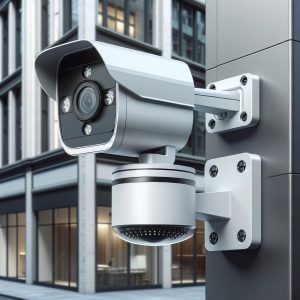In today’s digital age, cybersecurity has become a critical concern for both individuals and businesses. With the increasing reliance on technology, the threat landscape has evolved, making it essential to implement robust security measures to protect sensitive data. This article explores the importance of cybersecurity, common threats, and best practices for safeguarding your data at home and in business environments.
Understanding Cybersecurity
Cybersecurity refers to the practice of protecting systems, networks, and data from digital attacks. These attacks are often aimed at accessing, changing, or destroying sensitive information, extorting money from users, or interrupting normal business processes. Effective cybersecurity measures are essential to protect against these threats and ensure the integrity, confidentiality, and availability of data.
Common Cyber Threats
1. Malware
Malware, or malicious software, includes viruses, worms, trojans, ransomware, and spyware. These programs can damage or disrupt systems, steal sensitive information, and provide unauthorized access to attackers.
2. Phishing
Phishing attacks involve tricking individuals into providing personal information, such as passwords and credit card numbers, by pretending to be a trustworthy entity. These attacks are often carried out through email, social media, or fraudulent websites.
3. Man-in-the-Middle (MitM) Attacks
MitM attacks occur when an attacker intercepts and alters communication between two parties without their knowledge. This can lead to the theft of sensitive information or unauthorized access to systems.
4. Denial-of-Service (DoS) Attacks
DoS attacks aim to overwhelm a system, network, or website with traffic, rendering it unavailable to users. Distributed Denial-of-Service (DDoS) attacks involve multiple compromised systems working together to launch the attack.
5. Insider Threats
Insider threats come from within an organization and can be intentional or accidental. Employees, contractors, or business partners with access to sensitive information can pose significant risks if they misuse or inadvertently expose data.
Cybersecurity Best Practices for Home
1. Use Strong Passwords
Create complex passwords that are difficult to guess. Use a combination of letters, numbers, and special characters, and avoid using the same password for multiple accounts. Consider using a password manager to keep track of your passwords securely.
2. Enable Two-Factor Authentication (2FA)
Two-factor authentication adds an extra layer of security by requiring a second form of verification, such as a text message code or authentication app, in addition to your password.
3. Keep Software Updated
Regularly update your operating system, applications, and antivirus software to protect against known vulnerabilities. Enable automatic updates whenever possible.
4. Secure Your Home Network
Change the default login credentials for your router and use a strong password. Enable WPA3 encryption for your Wi-Fi network and consider setting up a guest network for visitors.
5. Be Cautious with Emails and Links
Be wary of unsolicited emails, especially those requesting personal information or containing suspicious links. Verify the sender’s identity before clicking on any links or downloading attachments.
Cybersecurity Best Practices for Business
1. Develop a Cybersecurity Policy
Create a comprehensive cybersecurity policy that outlines the procedures and protocols for protecting sensitive data. Ensure that all employees are aware of and adhere to these guidelines.
2. Conduct Regular Security Training
Provide ongoing cybersecurity training for employees to educate them about common threats and safe practices. Regular training helps to reinforce the importance of cybersecurity and keeps employees informed about the latest threats.
3. Implement Access Controls
Limit access to sensitive information based on the principle of least privilege. Ensure that employees only have access to the data and systems necessary for their job roles.
4. Use Encryption
Encrypt sensitive data both in transit and at rest to protect it from unauthorized access. Use strong encryption protocols and ensure that encryption keys are stored securely.
5. Monitor and Respond to Threats
Implement continuous monitoring to detect and respond to potential security incidents. Use intrusion detection systems (IDS) and intrusion prevention systems (IPS) to identify and mitigate threats in real-time.
6. Backup Data Regularly
Regularly back up critical data to ensure that it can be restored in the event of a cyberattack or data loss. Store backups in a secure, offsite location and test the restoration process periodically.
7. Secure Mobile Devices
Implement security measures for mobile devices used by employees, such as encryption, remote wipe capabilities, and mobile device management (MDM) solutions. Ensure that employees follow best practices for securing their devices.
Conclusion
Cybersecurity is an ongoing process that requires vigilance and proactive measures to protect sensitive data. By understanding common threats and implementing best practices, both individuals and businesses can significantly reduce the risk of cyberattacks and ensure the security of their information. Stay informed about the latest cybersecurity trends and continuously update your security measures to stay ahead of potential threats.





